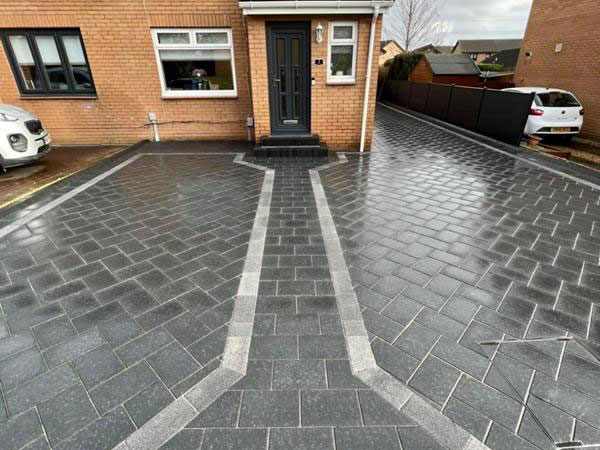Imagine an entryway that’s not just beautiful but also actively contributes to the health of the environment. Permeable driveways designed as rain gardens do precisely that. This dual-purpose feature blends style and sustainability, creating a functional space that also supports natural processes.
But how exactly does it work, and why should you consider this eco-friendly option for your home?

Here’s an in-depth look at the concept and its benefits.
What are Permeable Driveways?
Unlike traditional concrete or asphalt driveways, permeable driveways are designed to allow water to pass through rather than run off the surface. This is achieved using porous materials such as gravel, permeable pavers, or porous concrete. Beneath the surface, a carefully constructed layer of materials, like sand and gravel, helps filter and direct water into the soil below. But beyond managing water flow, these driveways can take on an even greater role when combined with rain garden features.
The Role of Rain Gardens
A rain garden is a shallow, landscaped area designed to collect and absorb rainwater runoff from impervious surfaces like roofs, roads, and driveways. Planted with native vegetation, this garden mimics the way natural ecosystems manage water. By integrating a rain garden into your driveway design, you create a system that not only prevents flooding and erosion but also filters pollutants from the water as it seeps into the ground.
How Permeable Driveways and Rain Gardens Work Together?
By combining the principles of permeability and natural filtration, the driveway becomes more than a hardscape. It becomes part of the environment. Here’s how:
Water Absorption
When rain falls, it seeps through the porous material of the driveway instead of running off into drains. This reduces the risk of urban flooding and decreases pressure on stormwater systems.
Natural Filtration
Beneath the driveway’s surface, water is filtered through layers of aggregates. Any remaining rainwater that moves towards the rain garden is purified further by the soil and plant roots, which naturally remove sediments and pollutants.
Support for Local Ecosystems
The rain garden becomes a mini-habitat, offering food and shelter for birds, bees, and butterflies. By planting native species, you encourage biodiversity and integrate your home more seamlessly into the surrounding environment.
Benefits of a Permeable Rain Garden Driveway
Environmental Efficiency
Traditional driveways contribute to runoff problems that lead to water pollution, flooding, and erosion. Permeable driveways prevent this by managing water at the source. This makes them an ideal addition to homes in areas prone to heavy rainfall.
Cost Savings
Over time, permeable driveways reduce the need for costly stormwater management solutions. They also protect your property from water damage, providing long-term economic and environmental benefits.
Improved Aesthetics
Rain garden driveways don’t just perform well; they look stunning. Combining natural greenery with functional driveway design can significantly boost curb appeal. Whether you love the wild charm of native plants or a refined combination of decorative grasses and shrubs, the options are virtually endless.
Cooling Effects
Traditional driveways absorb heat, contributing to the urban heat island effect. Permeable surfaces and vegetation are cooler, creating a more comfortable environment around your home.
Sustainability Mindset
Installing a rain garden driveway demonstrates a commitment to sustainable living. It’s a visible step toward eco-conscious choices that inspire others to think about their impact on the planet.
Conclusion
A permeable driveway that doubles as a rain garden is an investment in a greener future. By integrating functionality with nature, you’ll create an entryway that protects the environment, supports local wildlife, and leaves a lasting impression.
So, why settle for ordinary when your driveway can be extraordinary?

